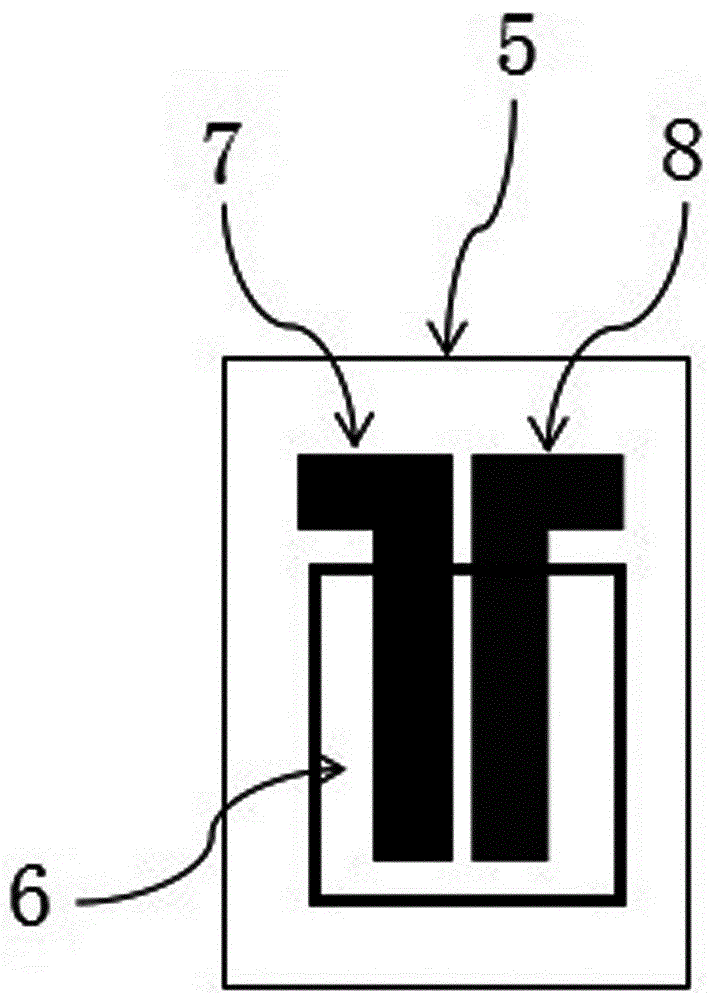Salmonella sensor, preparation method and detection method of salmonella concentration
A Salmonella and sensor technology, applied in the field of biosensing, can solve the problems of expensive equipment, low sensitivity, and cumbersome sample processing process, and achieve the effect of simple equipment, easy miniaturization, and high-sensitivity detection of Salmonella concentration
- Summary
- Abstract
- Description
- Claims
- Application Information
AI Technical Summary
Benefits of technology
Problems solved by technology
Method used
Image
Examples
Embodiment 1
[0053] Example 1 Salmonella sensor based on steric hindrance effect
[0054] Principle: The gate electrode is an ITO electrode assembled with cadmium sulfide quantum dots (CdS QDs). Under light conditions, when the energy of the light is greater than the energy required for the electron transition in CdS, the electrons in the valence band in CdS will transition to the conduction band. , forming electron-hole pairs. When the electrons in the conduction band are injected into the electrode, the electron donor in the solution provides electrons to the holes in the valence band, which will form a photocurrent. The generation of this current will reduce the potential of the electrolyte / gate electrode interface, thereby increasing the applied on the OECT device. effective gate voltage. The channel current of OECT is given by the following equation:
[0055]
[0056] where q stands for electron charge, µ stands for hole mobility, represents the initial hole density in the orga...
Embodiment 2
[0066] Example 2 Salmonella immunosensor based on exciton-plasma effect
[0067] Principle: Based on the steric hindrance effect, a system based on the exciton-plasmon effect between cadmium sulfide quantum dots (CdS QDs) and gold nanoparticles (AuNPs) is designed to further improve the sensitivity of the sensor, due to the CdS QDs The fluorescence spectrum overlaps with the ultraviolet absorption spectrum of Au NPs, and the fluorescence of CdS QDs under light conditions can excite Au NPs to undergo surface plasmon resonance, and the interaction between them will change the excitonic state in CdS QDs, resulting in a decrease in photocurrent. Therefore, Au NPs were modified on Salmonella, and antibodies were connected to the gate electrode. After specific binding, the exciton-plasmon effect was excited, resulting in a decrease in photocurrent. ds The -T curve shows the reduction of the light "off-on" step, and the effect of detecting different concentrations of Salmonella can b...
PUM
| Property | Measurement | Unit |
|---|---|---|
| Thickness | aaaaa | aaaaa |
| Thickness | aaaaa | aaaaa |
Abstract
Description
Claims
Application Information
 Login to View More
Login to View More - R&D
- Intellectual Property
- Life Sciences
- Materials
- Tech Scout
- Unparalleled Data Quality
- Higher Quality Content
- 60% Fewer Hallucinations
Browse by: Latest US Patents, China's latest patents, Technical Efficacy Thesaurus, Application Domain, Technology Topic, Popular Technical Reports.
© 2025 PatSnap. All rights reserved.Legal|Privacy policy|Modern Slavery Act Transparency Statement|Sitemap|About US| Contact US: help@patsnap.com



